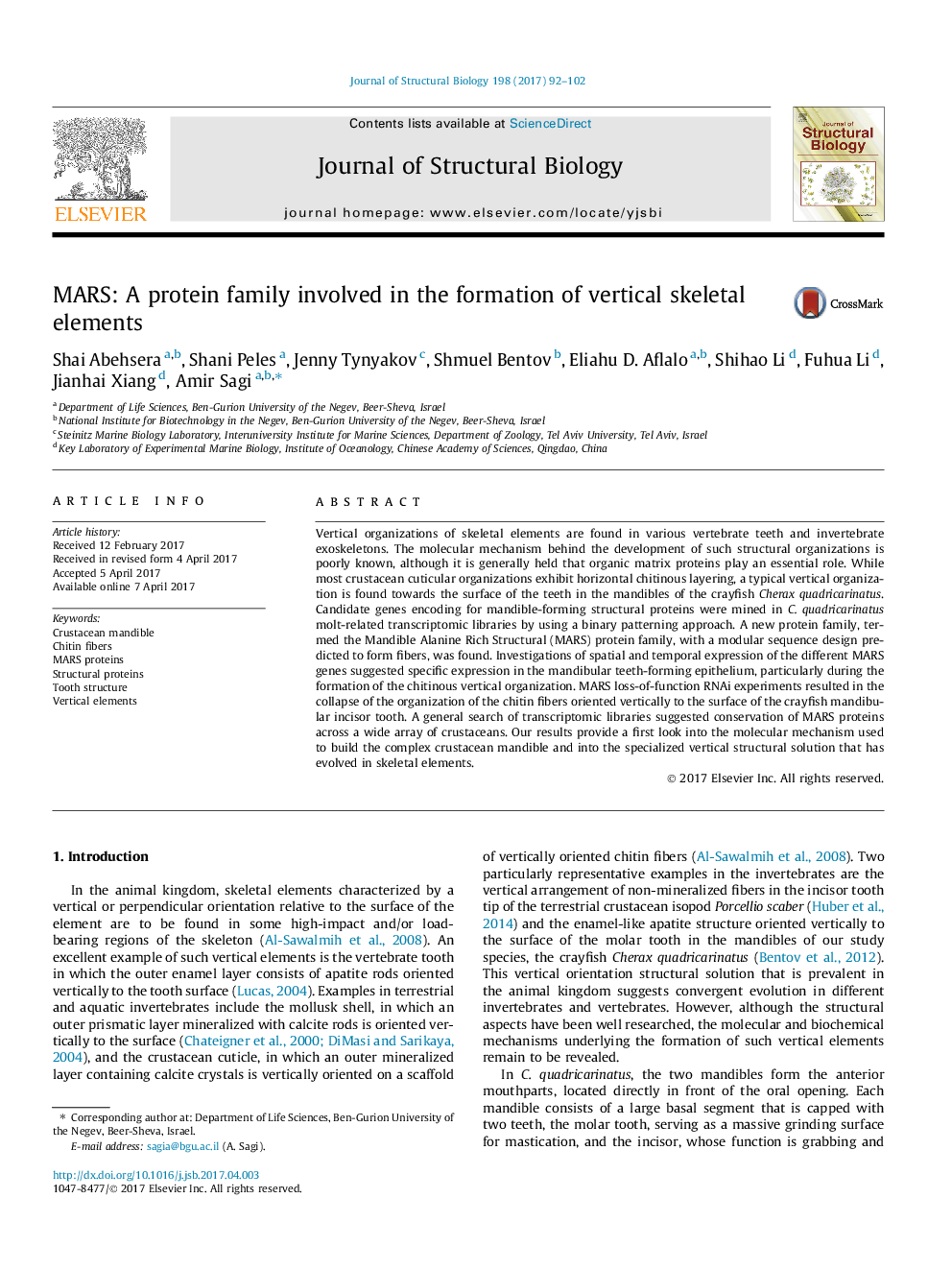| Article ID | Journal | Published Year | Pages | File Type |
|---|---|---|---|---|
| 5591565 | Journal of Structural Biology | 2017 | 11 Pages |
Abstract
Vertical organizations of skeletal elements are found in various vertebrate teeth and invertebrate exoskeletons. The molecular mechanism behind the development of such structural organizations is poorly known, although it is generally held that organic matrix proteins play an essential role. While most crustacean cuticular organizations exhibit horizontal chitinous layering, a typical vertical organization is found towards the surface of the teeth in the mandibles of the crayfish Cherax quadricarinatus. Candidate genes encoding for mandible-forming structural proteins were mined in C. quadricarinatus molt-related transcriptomic libraries by using a binary patterning approach. A new protein family, termed the Mandible Alanine Rich Structural (MARS) protein family, with a modular sequence design predicted to form fibers, was found. Investigations of spatial and temporal expression of the different MARS genes suggested specific expression in the mandibular teeth-forming epithelium, particularly during the formation of the chitinous vertical organization. MARS loss-of-function RNAi experiments resulted in the collapse of the organization of the chitin fibers oriented vertically to the surface of the crayfish mandibular incisor tooth. A general search of transcriptomic libraries suggested conservation of MARS proteins across a wide array of crustaceans. Our results provide a first look into the molecular mechanism used to build the complex crustacean mandible and into the specialized vertical structural solution that has evolved in skeletal elements.
Keywords
Related Topics
Life Sciences
Biochemistry, Genetics and Molecular Biology
Molecular Biology
Authors
Shai Abehsera, Shani Peles, Jenny Tynyakov, Shmuel Bentov, Eliahu D. Aflalo, Shihao Li, Fuhua Li, Jianhai Xiang, Amir Sagi,
